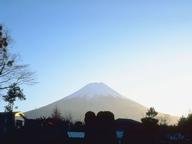Quiz Answer Key and Fun Facts
1. The English word "lava" finds its etymology in Italian. Flash floods in southern Italy would produce small streams that would wash away the land ("lavare" is "to wash" in Italian). One such stream was called a "lava". This word was then applied to similar-looking lava flows, coming from which of these historically dangerous volcanoes illustrated here?
2. Grand explosive eruptions, like those that came from Krakatoa, are only one type of eruption that can come from volcanoes. The other type of eruption causes the natural phenomenon known as a lava flow. Common in Hawaiian volcanoes, what is this type of eruption known as?
3. Around 90% of the Earth's crust is made of a certain type of mineral. It stands to reason, then, that the vast majority of lava is composed of this type. Which type is it?
4. There are two main types of lava flows, both coming from the Hawaiian language: pahoehoe (pronounced "paw-hoey-hoey") and a'a (pronounced "ah-ah"). Pictured here is an a'a lava flow, which tends to be bulkier and move more quickly than pahoehoe lava flows. Does lava in the a'a formation tend to cool more quickly as well?
5. Pahoehoe lava flows are generally flat and slow-moving. While moving, the cooled top layer (skin) tends to prevent the lava underneath from cooling, allowing it to flow longer and farther. When a rip does occur, like in the photo, it is cooled quickly and the lava keeps flowing. When completely cooled, pahoehoe lava flows are associated with what type of slope?
6. This particular formation happens when lava contained in the earth undersea makes its way to the surface only to be rapidly cooled by the chilly ocean waters. Named loosely after their shape, what are these lava formations called?
7. Lava fountains are common in certain Hawaiian and Italian volcanoes. Lava is ejected from the volcanic craters, vents, or fissures, but it is not considered an explosive eruption like the one that destroyed Pompeii. Which of the following causes lava fountains?
8. Pictured here is a lava lake created by the volcanic activity of Kilauea in Hawaii. This particular lava lake is molten, though these features don't stay molten forever and eventually they harden.
True or false: Lava lakes are formed when balls of lava are launched from an explosive eruption and fall to the earth, creating a crater upon impact.
9. Lava that has cooled often creates small unique nodules, especially in pahoehoe lava flows. Named after a body part, what do volcanologists call these nodules?
10. Lava is not a completely terrestrial phenomenon as Mercury, Venus, Mars, Io, and even the Moon have or have had volcanoes at one point. In 2015, while looking at photos of Pluto, NASA scientists believe they spotted a special kind of volcano that can emit water, ammonia, or methane. What is the freezing lava from these volcanoes called?
Source: Author
trident
This quiz was reviewed by FunTrivia editor
rossian before going online.
Any errors found in FunTrivia content are routinely corrected through our feedback system.
